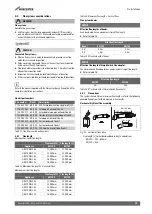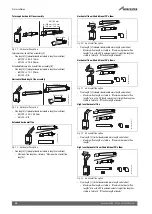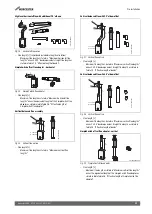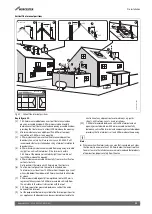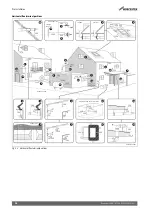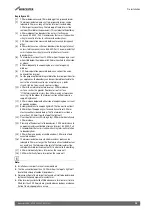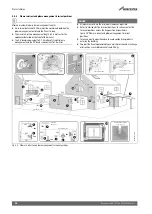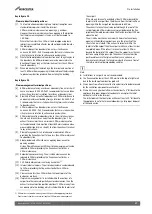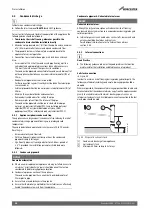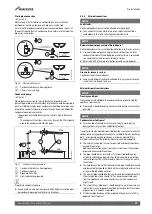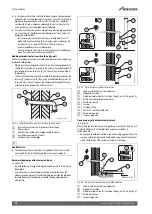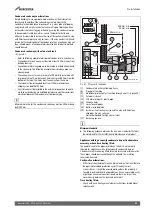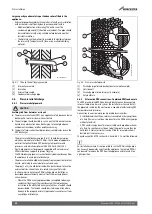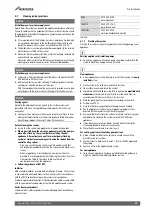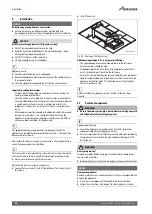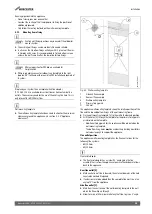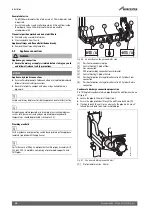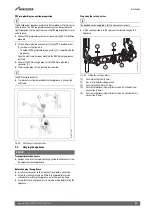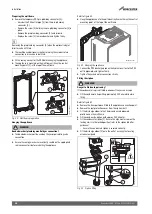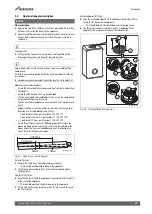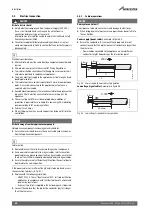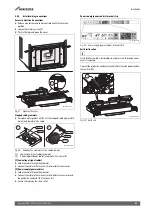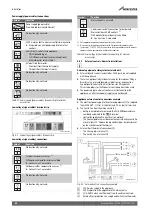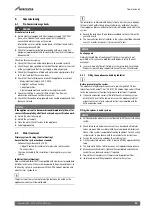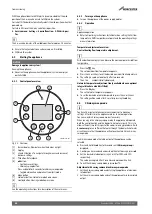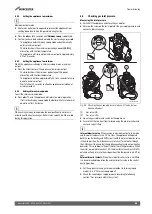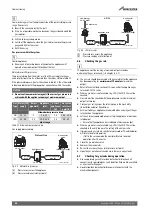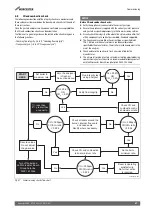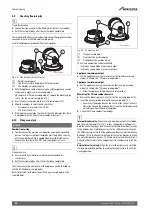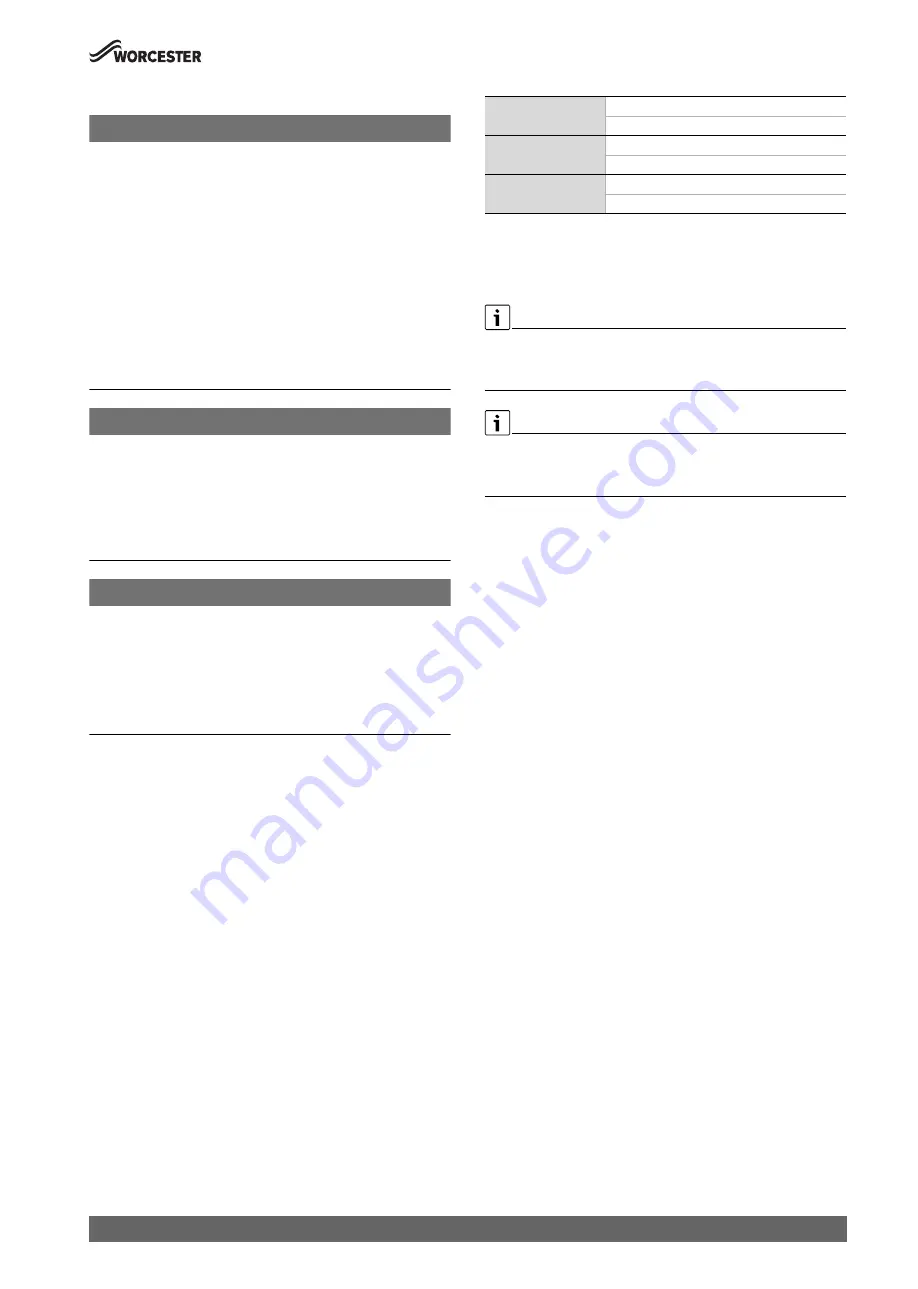
Pre-Installation
33
Greenstar 4000 – 6 720 891 162 (2020/09)
4.7
Cleaning primary systems
NOTICE
Risk of damage to system or appliance!
Debris from the system can damage the appliance and reduce efficiency.
Failure to comply with the guidelines for the use of water treatment with
the appliance will invalidate the appliance guarantee and contravene the
Building Regulations.
▶ It is a requirement of the Building Services Compliance Guide which
is a second tier document to the Building Regulations to flush and
inhibit the primary water system in accordance with BS 7593.
▶ The Building Services Compliance Guide recommends that a primary
water cleanser is fitted to the system.
▶ Worcester Bosch recommend fitting a filter that will help remove both
magnetite and non-magnetic debris.
Worcester offers varies filters that helps remove both magnetite and
non-magnetic debris; see accessories list for available options.
NOTICE
Risk of damage to system or appliance!
▶ Salt based, artificially softened water that adjusts the pH value MUST
NOT be used to fill the system.
▶ Alternatively there are water softening/treatment products that do
not adjust or alter the pH levels of the water.
With these products it may not be necessary to provide an untreated
water by-pass to the primary water filling point of the heat system
NOTICE
Sealing agents
Normally the addition of sealing agents to the system water is not
permitted as this can cause problems with deposits left in the heat
exchanger.
▶ Heating systems may lose small amounts of water over time. In cases
where all attempts to find a system micro leak have failed, Worcester,
Bosch Group supports the use of Fernox F4 leak sealer.
Before cleaning the system:
▶ Ensure that the system and pipework is in good working order.
▶
Where possible keep the existing appliance/circulating pump in
place when flushing the system before installing the new
appliance. Alternatively use an after market power flushing
system or similar to remove magnetite and other debris from the
central heating system.
– Even new central heating systems contain contaminants that
need to be removed before treating the system with inhibitor/anti-
freeze.
– When an appliance is installed onto a new system then it is
possible to use the appliance whilst cleaning the system. A system
filter must be fitted to the return to reduce the risk of
contaminants entering the appliance.
▶
Follow the guidance of BS7593.
Inhibitor
Add a suitable inhibitor or combined inhibitor/anti-freeze, if the system
is exposed to freezing conditions, to the heating system in accordance
with the DWTA code of practice and manufacturer‘s guidelines.
Products approved to the BuildCert standard are deemed as compatible
with the components and equipment within the appliance and system.
Water treatment products
Suitable water treatment products can be obtained from the following
manufacturers:
Table 18
4.7.1
Flushing the system
Flushing the system using existing appliance/circulating pump or new
appliance.
Existing appliances/circulation pumps
▶ An existing appliance/circulating pump should be used to flush the
system before the new appliance is installed.
New appliances
▶ A new appliance must only be used to assist the cleaning of a
newly
installed
system.
▶ Fill the system with cold water and check for leaks.
▶ Open all drain cocks and drain the system.
▶ Close drain cocks and add a suitable flushing agent
compatible with
aluminium
at the correct strength for the system conditions in
accordance with the manufacturer‘s instructions.
▶ Mark the position of the lockshield valves and open them fully.
▶ Fully open all TRVs.
▶ Circulate the flushing agent before the appliance is fired up.
▶ Run the appliance/system at normal operating temperature as
directed by the manufacturer of the flushing agent.
▶ Drain and thoroughly flush the system to remove the flushing agent
and debris. Do not drain the system through the PRV of new
appliances.
▶ It may be necessary to use a power flushing machine to aid the
cleansing procedure in some circumstances.
▶ Close the drain cocks and manual air vents.
For existing appliance/circulating pump actions.
▶ Add a suitable inhibitor to the system in accordance with the
manufacturers instructions.
▶ Fill the system to between 0.8 and 1.7 bar via a WRAS approved
filling loop.
▶ Vent any air from the appliance and system.
For new appliance.
▶ Once the new appliance has been installed follow the guidance in
Filling the appliance and adding inhibitor section.
ADEY
01242 546700
www.adey.com
FERNOX
0330 100 7750
www.fernox.com
SENTINEL
01928 704330
www.sentinelprotects.com/uk

